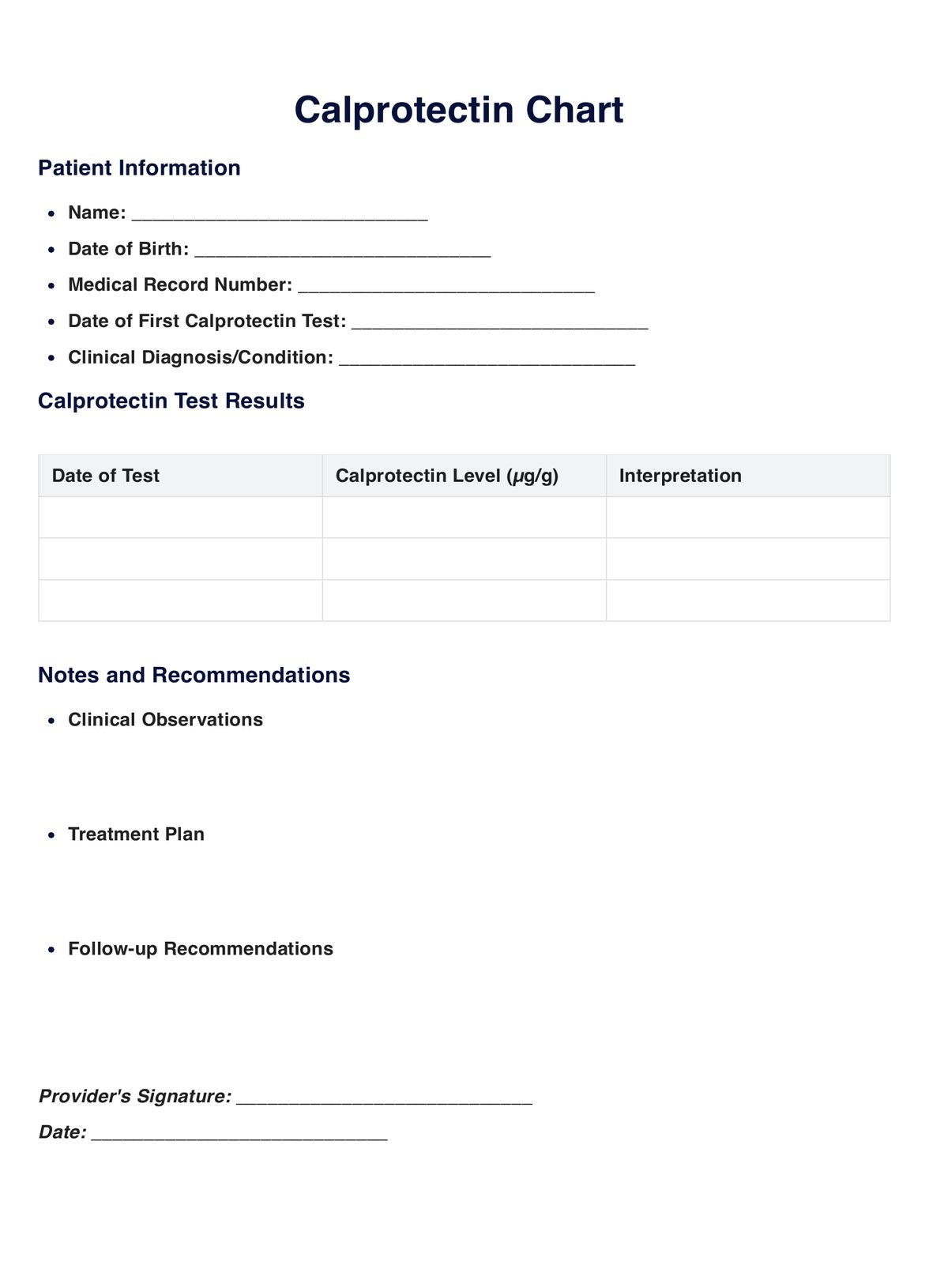Healthcare providers, particularly gastroenterologists and primary care physicians, typically request a Calprotectin Chart for patients with suspected or diagnosed inflammatory bowel conditions.

Improve your gastrointestinal health with the Calprotectin Chart. Download the PDF for seamless monitoring and better care.
Healthcare providers, particularly gastroenterologists and primary care physicians, typically request a Calprotectin Chart for patients with suspected or diagnosed inflammatory bowel conditions.
Calprotectin Charts monitor gastrointestinal health, assess inflammation levels, and manage conditions like Crohn's disease and ulcerative colitis. They are employed during diagnosis, treatment evaluation, and long-term disease management.
Patients collect a stool sample, which is analyzed in a laboratory for calprotectin levels. The results are then plotted on the Calprotectin Chart, allowing healthcare providers and patients to track trends, assess disease activity, and make informed decisions about treatment plans.
EHR and practice management software
*No credit card required
Free
$0/usd
Unlimited clients
Telehealth
1GB of storage
Client portal text
Automated billing and online payments